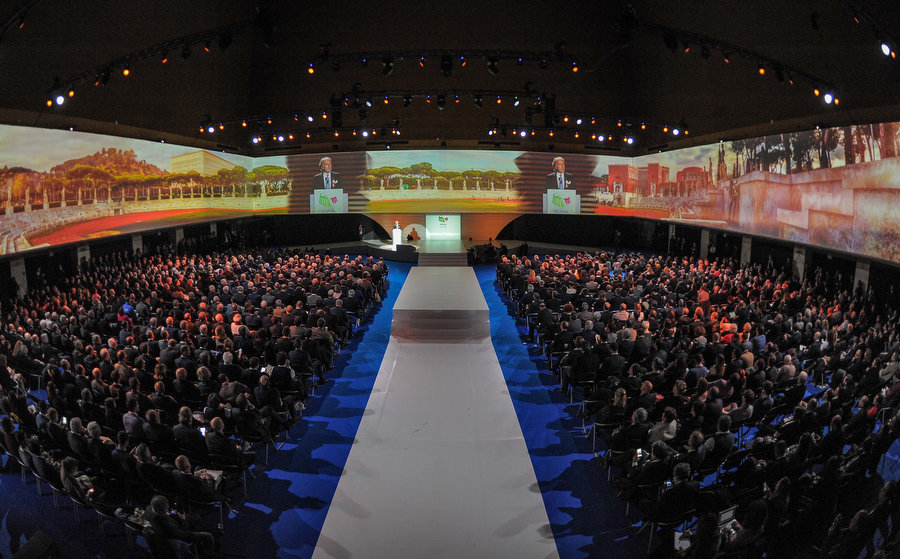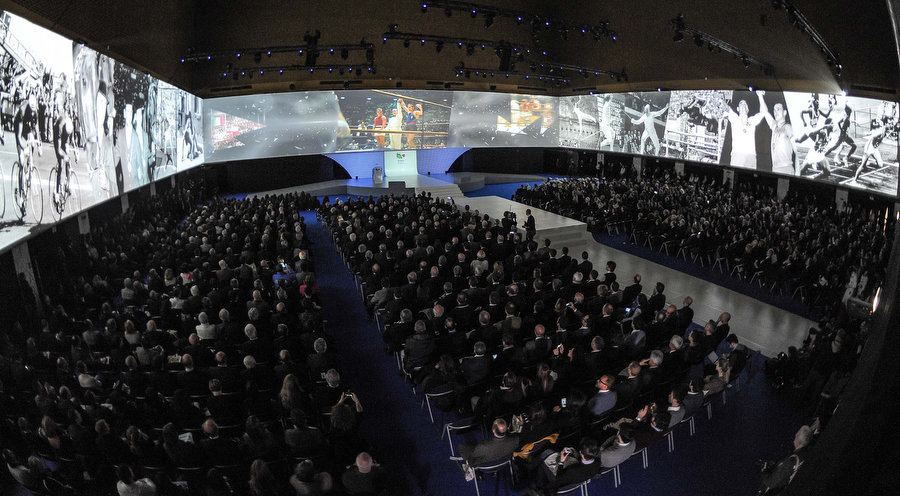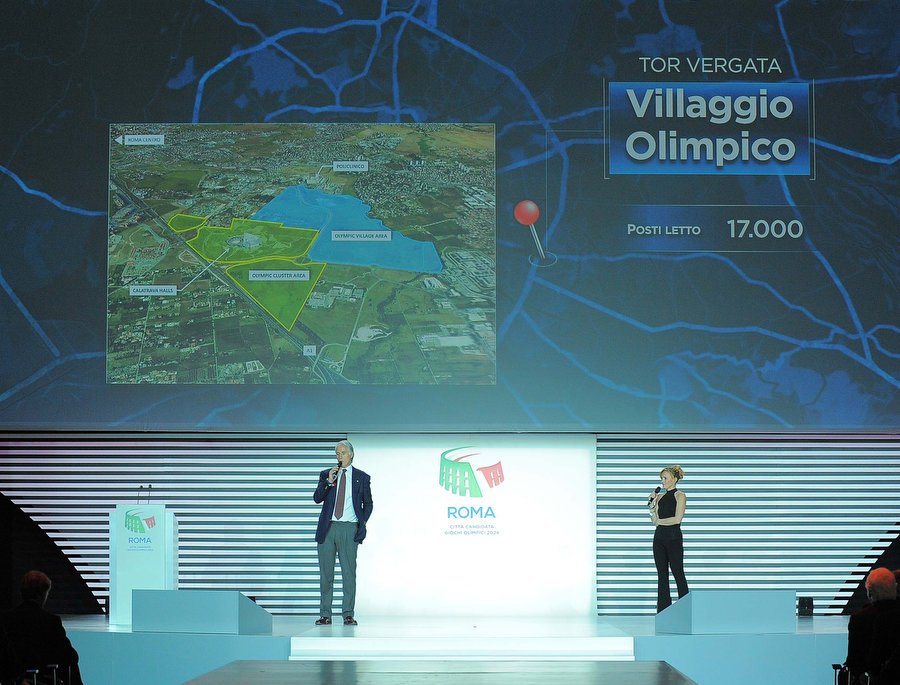Presentation of the Olympic bid application. "This will be the biggest celebration of sports”

Heading the 1,000-plus guests present at the Palazzo dei Congressi dell'Eur was the actor Sergio Castellitto who, in his speech, stressed Rome’s uniqueness with "a city that has been reborn a thousand times, but still remains itself." Firstly however, the president of the Italian National Olympic Committee (CONI) read the welcoming message (click here for complete text) that the President of the Republic of Italy, Sergio Mattarella, had addressed to him and to the president of the organising committee, Luca Montezemolo: "Just as the 1960 Olympics signalled an important step in the economic and social development of Italy - writes the head of state - my hope is that the 2024 Olympics will become the crossroads of new growth, marked by quality and sustainability."

The Chairman of the Committee explained that “The budget for the temporary sites will be 3.2 billion euros, and will include the organizational and managing costs. However, to this amount we must add revenue. In the case we win the competition for the Olympic bid, we would have a billion euros from the IOC. Considering the revenue from expected grants, sponsorship, tickets and licensing, we are aiming to equalize the cost of the temporary sites." In figures, according to a study by the University of Rome Tor Vergata (available here), conducted by Professor Beniamino Quintieri, the economic impact of the Games will produce a GDP growth of +0.4%, the creation of 177 thousand jobs, and an economic benefit of 2.9 billion euro.
In the auditorium were the representatives of the Government, the heads of the civil and military authorities, the federal presidents, and the all-time Italian national sports champions. On the stage you could just breathe in the magical air that linked, inextricably, the past, present and future. Here the Olympic fencing champion and general co-ordinator of Rome 2024, Diana Bianchedi, "challenged" her daughter Giulia with the foil, and Fiona May, an athletics champion also in charge of athletes’ relations, was presented together with her daughter Larissa. Then came the Rome 1960 Gold medal winner (for boxing), Nino Benvenuti, and the winner of Athens 2004 (for the marathon), Stefano Baldini. “We want to create the biggest celebration of sports ever organised”, added Montezemolo, “we want to remove any element that does not place sport at the centre of the project: sport, ethics, competition, passion. Sport is the greatest tool for uniting the world.”
The Vice President of the Italian Paralympics Organising Committee, Luca Pancalli (See slides), recollected that Rome 1960 was “also the home of the first Paralympics”. With regards to the file for candidacy, he made an assurance that "We have set ourselves some fixed objectives”. Among these, think about a sustainable transport connecting all the sites, so that even after the games this can be enjoyed by the whole community. Secondly is the regeneration of, in particular, the peripheral areas. The third objective sees the recovery of the existing sites, and the building of temporary sites to avoid the so called “cathedrals in the desert”.

The music from the Oscar winning Ennio Morricone will be the soundtrack of the Olympic dream of Rome on the occasion of the IOC in September 2017. "I am that will accompany the presentation in Lima for the final challenge." The show at Palazzo dei Congressi was brought to a close by the images of another Oscar prize winner, film director Paolo Sorrentino, taken from the film “The Great Beauty”, together with the performances of soprano Olivia Salvadori and of Castellitto: Rome demonstrated to have all the credentials to aim for victory, both through the arts and through sport.


